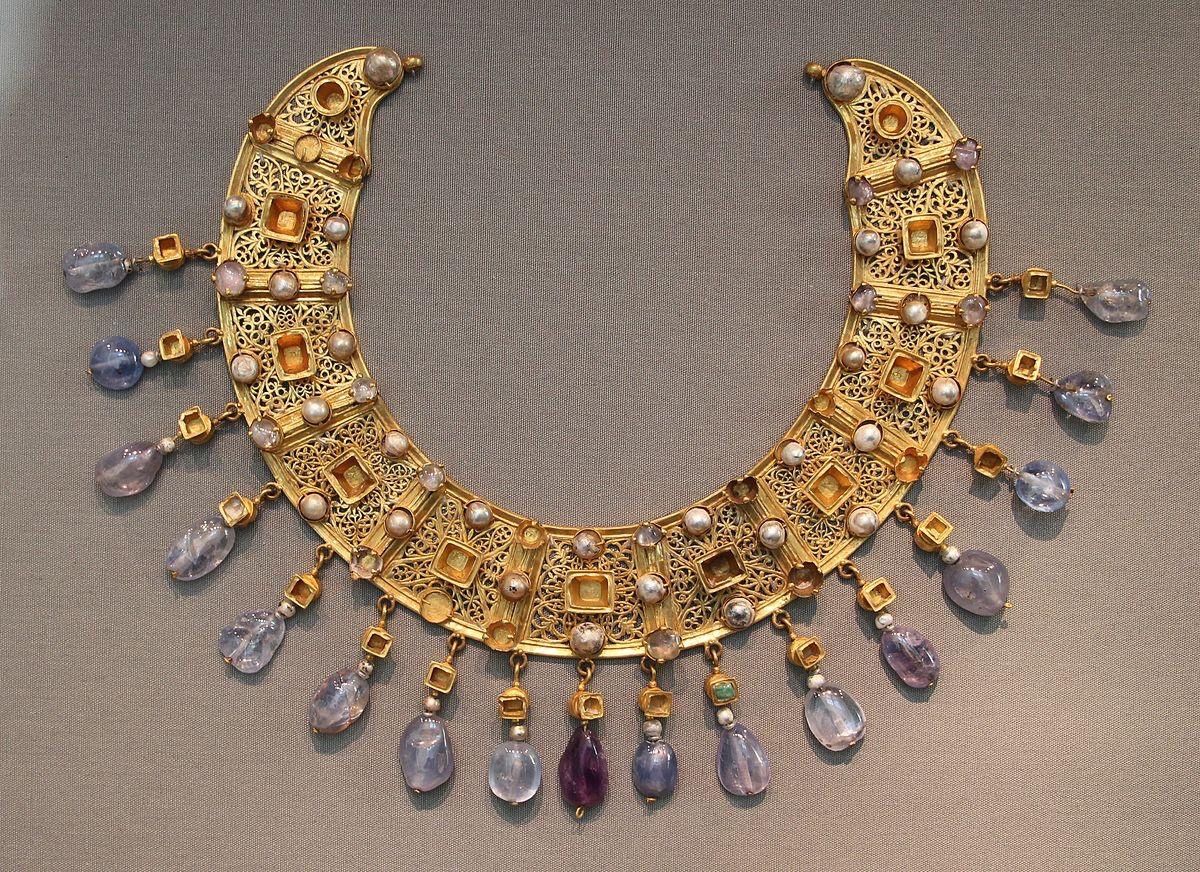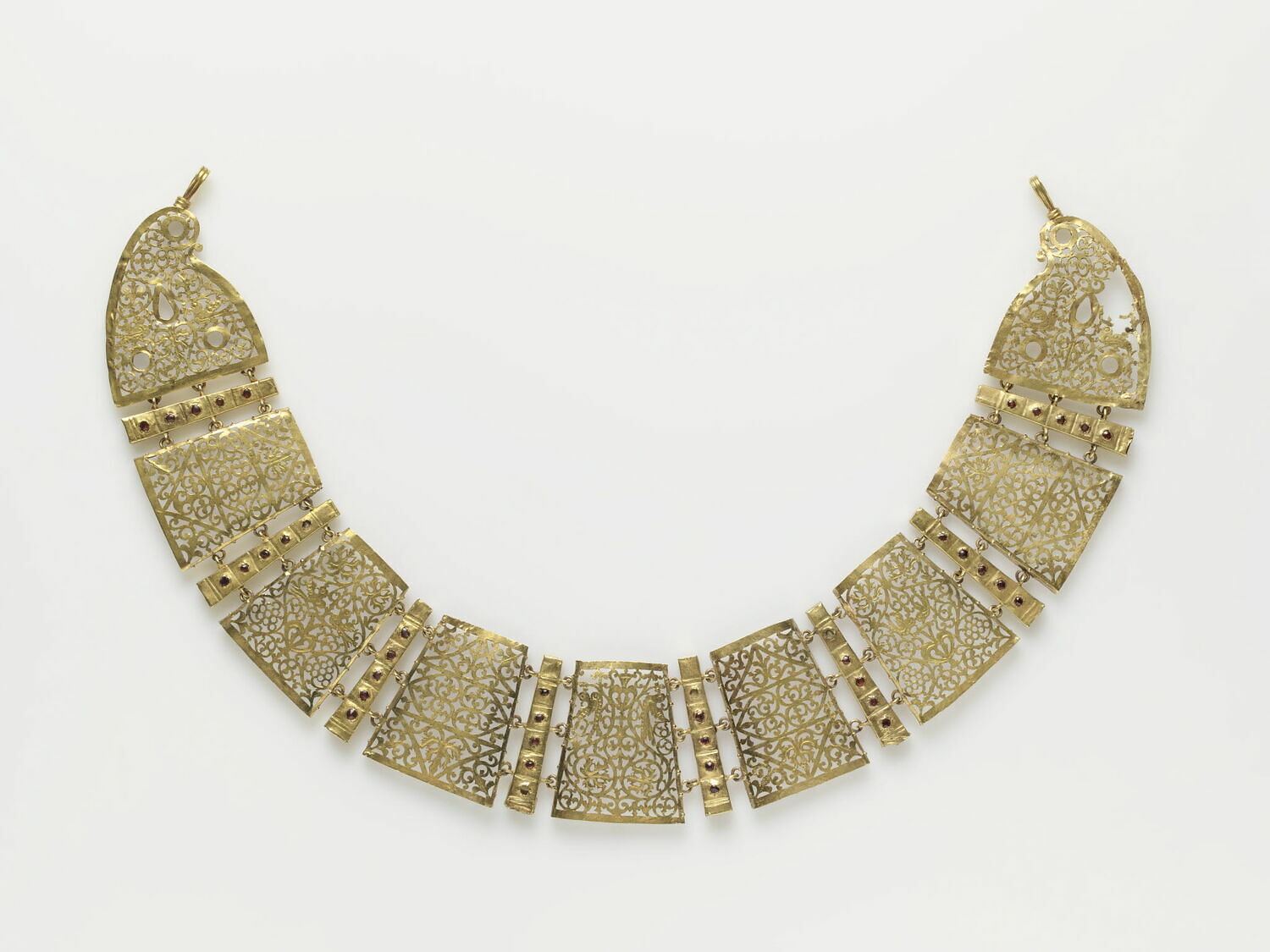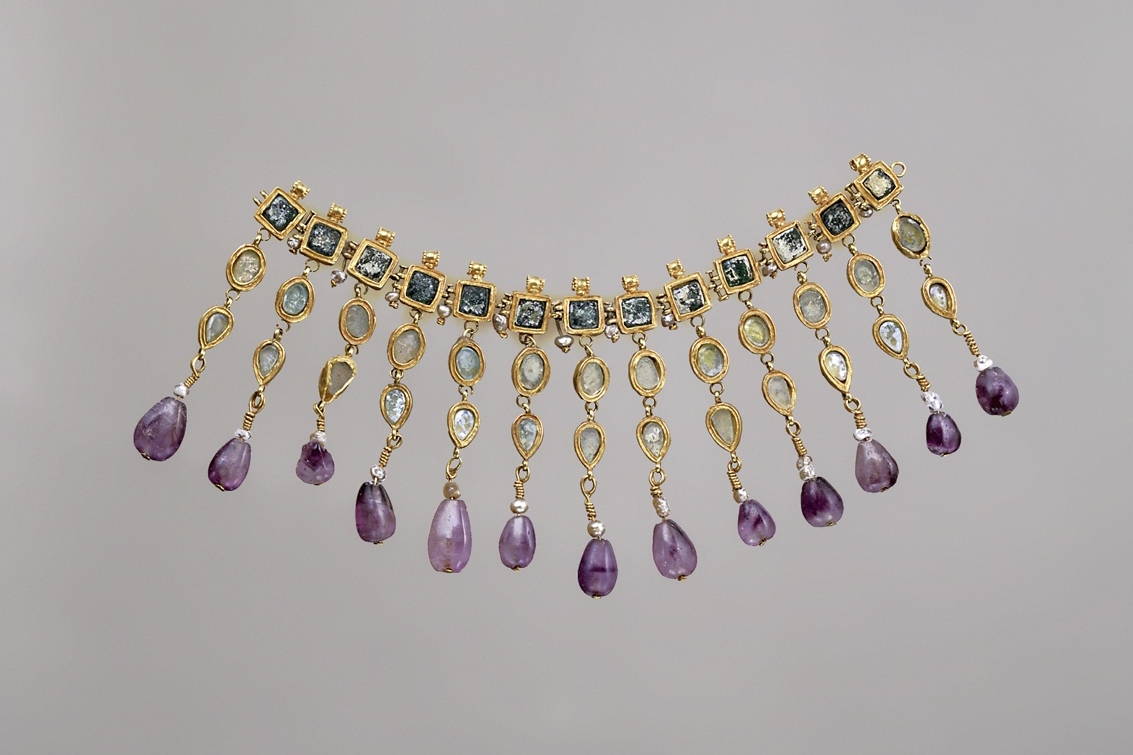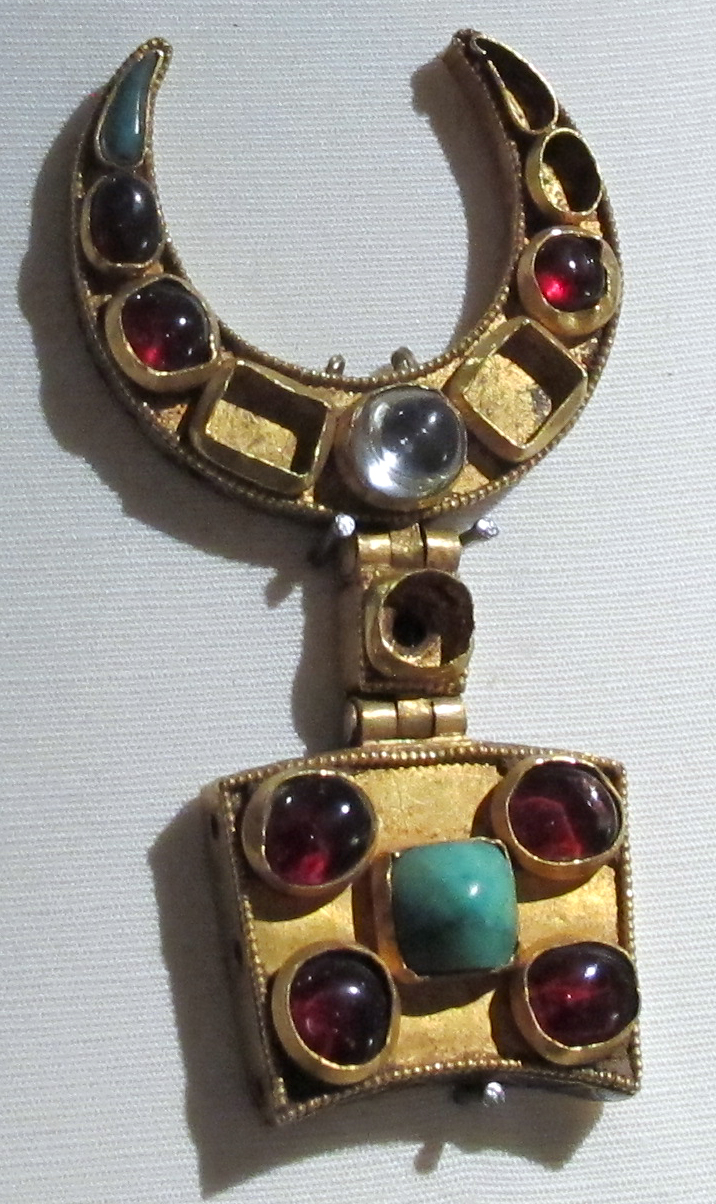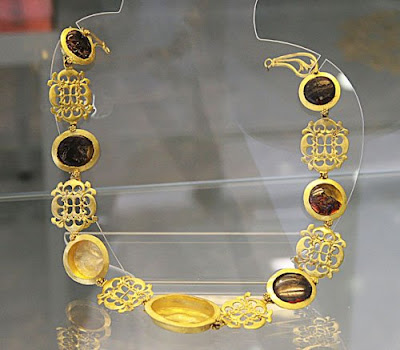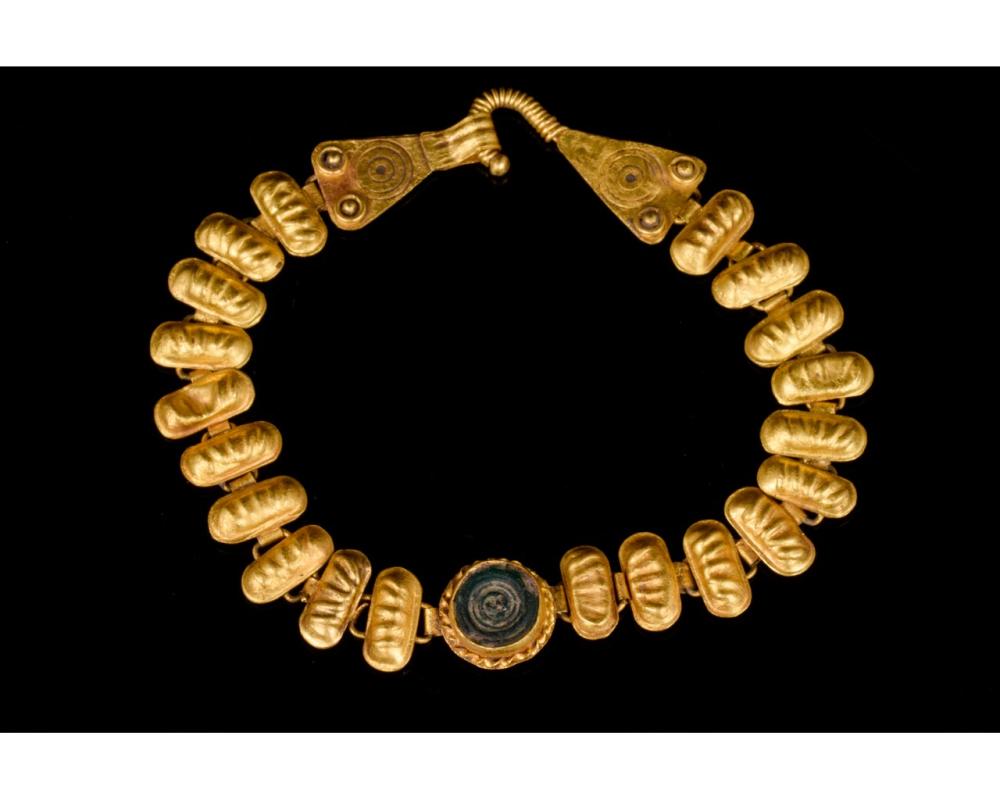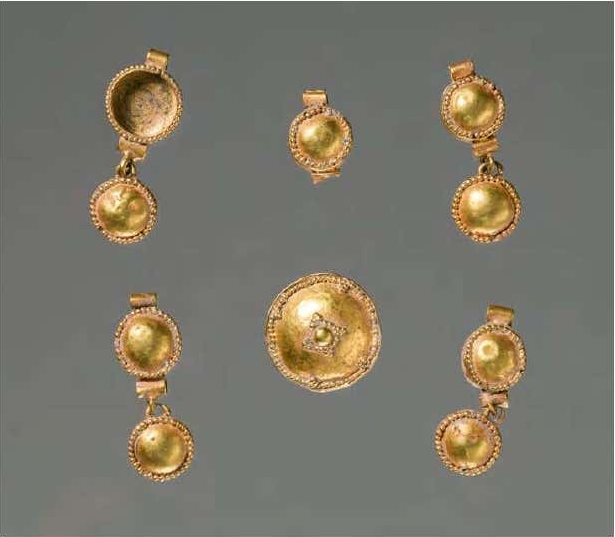“Silivri, formerly Selymbria (Greek: Σηλυμβρία), is a city and a district in Istanbul Province along the Sea of Marmara in Turkey, outside the urban core of Istanbul” [wiki]
“Gold trapezoidal necklace fragment. Within a border of plain gold sheet are five plain collets, each containing a cabochon garnet, the upper one incomplete. The open-work (opus interrasile) decoration comprises two pairs of concentric lozenges surrounded by vegetal scrollwork; between the inner and outer lozenges, a cable pattern; the smaller lozenge has a saltire cross-crosslet grid pattern, and the larger one a christogram based on the chi-rho monogram and a Greek cross. Rebated sides are plain with seven small attachment holes along each of the long sides, probably for thread.”
British Museum 1980,0501.1
Found/Acquired: Silivri
4th century, gold and garnets
Length: 3.95 cm, Width: 2.95 cm
Weight: 6.96 g


Oreficeria cloisonné nell’alto medioevo: inquadramento cronologico sulla base degli aspetti tecnologici e dell’origine delle materie prime
Alexandra Hilgner https://www.academia.edu
“In general, the openwork decoration (opus interrasile) was used frequently in late Roman and Byzantine goldsmiths, taking on more complex forms each time, often combined with single gems set. In this kind of artifact, unlike the cloisonné goldsmiths today, the back of the stones is always covered, a consequence of the fact that the perforations of the metal are carried out everywhere except under the stones. This technique is visible in many objects, such as the Silivri gold plate.
The development of this type of goldsmith leads to the appearance of stone decorations on a complete back plate, sometimes also called “plate-inlaying””


